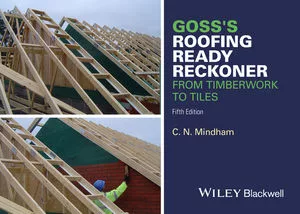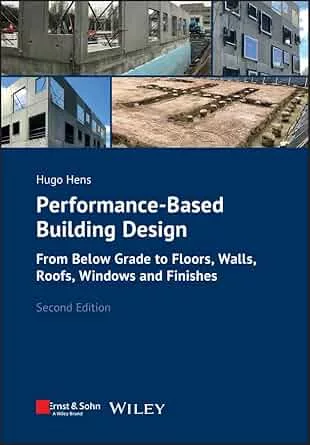Saving Ourselves from Falls
Fall Protection as Our Duty
I’ve written several articles on the technical issues of fall protection. I’ve researched regulations, read hundreds of articles, searched for protection devices, inspected job sites, calculated statistics, and evaluated the financial costs and penalties associated with falls. I have instructed thousands of workers in OSHA regulations and trained them in safe work practices over the years. But I’ve actually missed the point, missed it by a mile.Associations of contractors, insurers, manufacturers, employee unions and government regulators whose purpose is to prevent workers’ falls may also be missing the point.
The point is: The proposed revisions in the 1994 Fall Protection Standard will make it a performance-based standard. This means we must perform. It is still the only construction standard (1926.501) clearly stipulating each employer’s duty to protect all employees from falls. No construction employee should expect that a fatal fall for one out of 1,000 workers is “inevitable.”
Changing Attitudes
The Bureau of Labor Statistics has documented construction fall fatalities for decades. The most likely cause of workplace deaths (33 percent), after vehicular accidents, is falls from heights above 6 feet. Research of OSHA-recordable accidents indicates that an astounding 10-percent rise in fall fatalities occurred during the two-year period from 1995 to 1997. More than 50 percent (316) of that figure consisted primarily of ironworkers, carpenters and roofers. Roofers comprised 35 percent (110) of these fatal falls.Many of my site safety audits clearly indicate a disturbing trend in fall protection. In the beginning, employers are often focused more on profit and less on enabling an effective and costly fall protection program. Then, whether due to accidents, insurance claims or violations, the employer reacts and institutes more safety programs, invests in personal protective equipment, and designates competent employees to implement and enforce safe work practices.
On return visits, I have observed that many of the workers have since developed an overt resistance to enacting fall protection procedures. In some cases, the employees who were previously indignant at the employer’s non-existent or non-enforced fall protection policies, ultimately become outspoken about the interference and difficulties these practices impose on their workplace. More and more, they claim that the new fall protection policies are infeasible or will create a greater hazard. They view the new policies as obstacles to be expeditiously removed from the work site. This personal level of resistance often becomes an entrenched attitude expressed as the right of the worker to choose to be protected.
Except for “extreme” pitch roofers (greater than 12:12), the majority of the professional residential steep-slope roofers I have spoken with believe that personal fall arrest systems are virtually impossible to work with on a daily basis. However, when asked how long they had “consistently instituted PFAS in their roofing projects,” more than 70 percent said no longer than three days. The feasibility/greater hazard concerns of most roofers I have managed or audited have clearly been based on experiences that were either:
- Too short in duration to be considered a practical “hands-on” trial period on various types of roofing jobs.
- Undertaken without professional technical support to design user-friendly systems and adequately train workers in their use.
- Pre-empted with unreasonable expectations of time, productivity and profitability.
Starting a Fall Protection Program
It has always been my opinion that job-site safety culture is best changed by small increments rather than broad-based reform. But when it comes to fall protection, I see no compromise.It is important to eye the prize: There should be zero loss from falls from this day forward. It is the employer’s mandated duty to ensure every work area is free from any and all potential or existing fall hazards. The Mine Safety and Health Administration has mastered the simplicity of performance language. Regarding fall protection, 30 CFR, Part 56.15005 states that, “Safety belts and lines shall be worn when persons work where there is danger of falling.”
Realistically, an employer cannot simply choose to change his workers’ behavior in regards to fall protection without first changing the entire safety culture (and possibly structure) of his/her organization. Achieving all but short-term success depends on a corporate safety evolution, not revolution. For contractors, this means meeting their obligatory duty to provide fall protection with all their combined efforts and resources, attention to seemingly miniscule details, initial sacrifices to productivity and gross profits, and capital investment in the necessary equipment and its maintenance.
Contractors often ask me how to go about building a fall protection program. My advice is simple: Don’t bother with too much safety rhetoric until your desired results are consistent. Always watch where your landmark goals are and make sure they are short-term. Try to listen to those employees who share with you, that’s where the best advice always originates. Likewise, workers trust most the employer who consistently has faith in them, considers them intelligent assets, and takes all the time necessary to listen to them.
Don’t worry about the doubters when you’re getting started. There’ll be plenty of them. As you become more successful at fall protection profitability, avoid giving too much time and energy to those who “talk down” safety. Instead, seek the advice and company of those who are working at the same thing.
The actuality of “zero falls” is miles away from “hardly any falls,” and can only be reached by perpetual change and continuous input. Encourage all your employees to make a daily choice to enact whatever methods in which they have been trained and equipped by you. It is going to be up to them to remove all their own existing and potential fall hazards. You can’t be there, so don’t try. Assure them they are being paid not to fall. Everything else will take care of itself.
NRCA vs. OSHA
In response to OSHA’s issuance of Directive STD 3.1 (Interim Fall Protection Compliance Guidelines for Residential Construction), the National Roofing Contractors Association and the United Union of Roofers, Waterproofers and Allied Workers joined with OSHA to form the Roofing Industry Partnership for Safety and Health. Their goal was to jointly work to develop practical programs and practices for roofing safety and health to which their members could reasonably be expected to comply. In January 2000, the NRCA submitted a position paper to OSHA concerning that agency’s Advanced Notice of Proposed Rulemaking for Fall Protection (January 1999). Therein, NRCA voiced a number of serious concerns regarding OSHA’s procedures and proposals. In brief, these included:
Item 1: Opposition to the re-implementation of OSHA’s 1994 Fall Protection Standard as it is currently written. NRCA has petitioned OSHA to reopen the rulemaking proceedings rather than broadly enforcing what it considers unrealistic standards that will not adequately protect roofers. NRCA proposes that regulators consider:
- New roofing methods, materials and equipment in the industry that impact greatly on the implementation of safety procedures in the work/fall zone.
Item 2: Re-evaluation of the policy in regard to alternative fall protection measures permitted by OSHA’s 1995 STD 3.1 Directive, such as the use of slide guards on roofs up to and including 8:12 pitch.
Bill Good, NRCA’s executive vice president, said in response to OSHA’s ANPR: “It is clear that more work needs to be done to develop a practicable standard that adequately protects residential roofing workers from fall hazards without introducing significant new hazards to roofing work.”
I have no doubt that NRCA and the United Union of Roofers and Waterproofers have made an outstanding and significant contribution to the advancement of roofing safety in this country. They have educated, trained and evaluated tens of thousands of workers across the country in fall protection. I would join them both in suggesting that OSHA should retain the Interim Fall Protection Directive STD 3-O.1A until the original 1994 Fall Protection Standard has undergone a full and legal rulemaking procedure.
However, with the same good faith, I would strongly encourage both the roofing employers and labor unions to be true to their commitment to the life and safety of every roofer. They should insist on daily work practices that go beyond rhetoric and actually and absolutely provide 100-percent fall protection for every roofer, every shift, on every job, without compromise. That is what “duty” means. Safety before expediency. Protection before profitability. The worker’s life before the employer’s needs.
The NRCA asks that OSHA understand their serious concern “with professional roofing contractors losing significant market share to rogue contractors and others who, thanks to the heavy compliance costs of OSHA’s (fall protection rule), will be better able to underbid professional contractors who endeavor to comply.”
This is certainly a reasonable concern; one that I have heard expressed since the initial enactment of the fall protection standard. While bankruptcies and layoffs are seemingly tied to enforcement of the fall protection standard, the NRCA supposes that “rogue contractors” who achieve greater profits from non-compliance will eventually be the lone survivors in the marketplace. Nothing could be further from the truth.
For the directions to the truth, just follow the money. It will inevitably lead inside the Beltway of Washington, D.C., to the largest aggregation of congressional lobbyists this country has ever seen: It is the insurance industry that will tell us which employers will proceed to the next square, not OSHA. Reducing losses, achieving zero-accidents, and continuously training and involving the workforce in their own safety and health will lead to success.
Contractors who have achieved an EMR (mod rate) less than 0.25 have received significant insurance reductions, pay less in violation penalties and enjoy more accident-free, profitable and full-manpower days. An employer of 100 roofers with an EMR less than 0.10 and the goal of “self-insurance” in his sights, may then post the appropriate bonding rather than subsist “betting against himself” in the insurance market. With approximately 200,000 man-hours without an accident every year, he may re-post the bond, continue free from the drain of workers compensation payments, and enjoy the bottom-line return. With profits up and losses down, it will be the roofing contractor with a safety-based culture in the workplace who will outlast all other “rogue” and professional contractors.
Conclusion
A standard fall protection variance issued by OSHA allows an employer to avoid literal compliance due to the fact that it is infeasible or would present a greater hazard. This variance does not, however, release the employer from his obligation to provide an equal or greater alternative protection measure. One that best fits the task, equipment or job site. If anything, a fall protection standard variance is likely to be more costly and require more training and management oversight than the procedure deemed infeasible.I recommend that all parties imagine themselves, for a moment, as the worker who has fallen. Whether in two seconds from a 6-foot stepladder or 20 seconds from a high-rise penthouse, there would be little you would not trade for a second chance. Whether negotiating a union contract or bidding your next project, you should recall the desperation of a falling victim and the inevitable impact that comes too quickly. If we really gave every worker a choice – either risk a fall someday or never fall again – how much discussion would we hear about cost, time or feasibility? Only then could we claim that we are saving ourselves from falls.
Looking for a reprint of this article?
From high-res PDFs to custom plaques, order your copy today!




